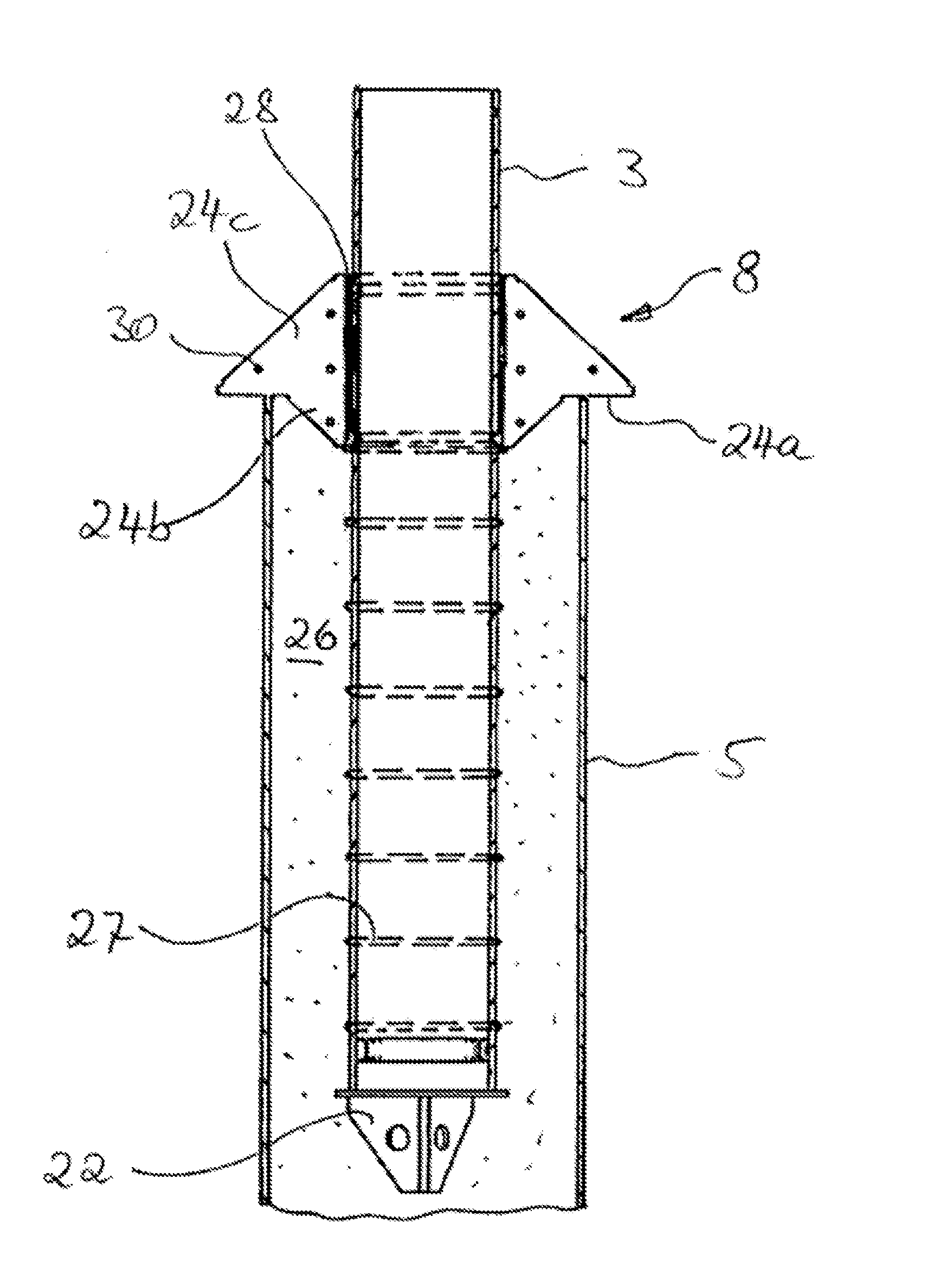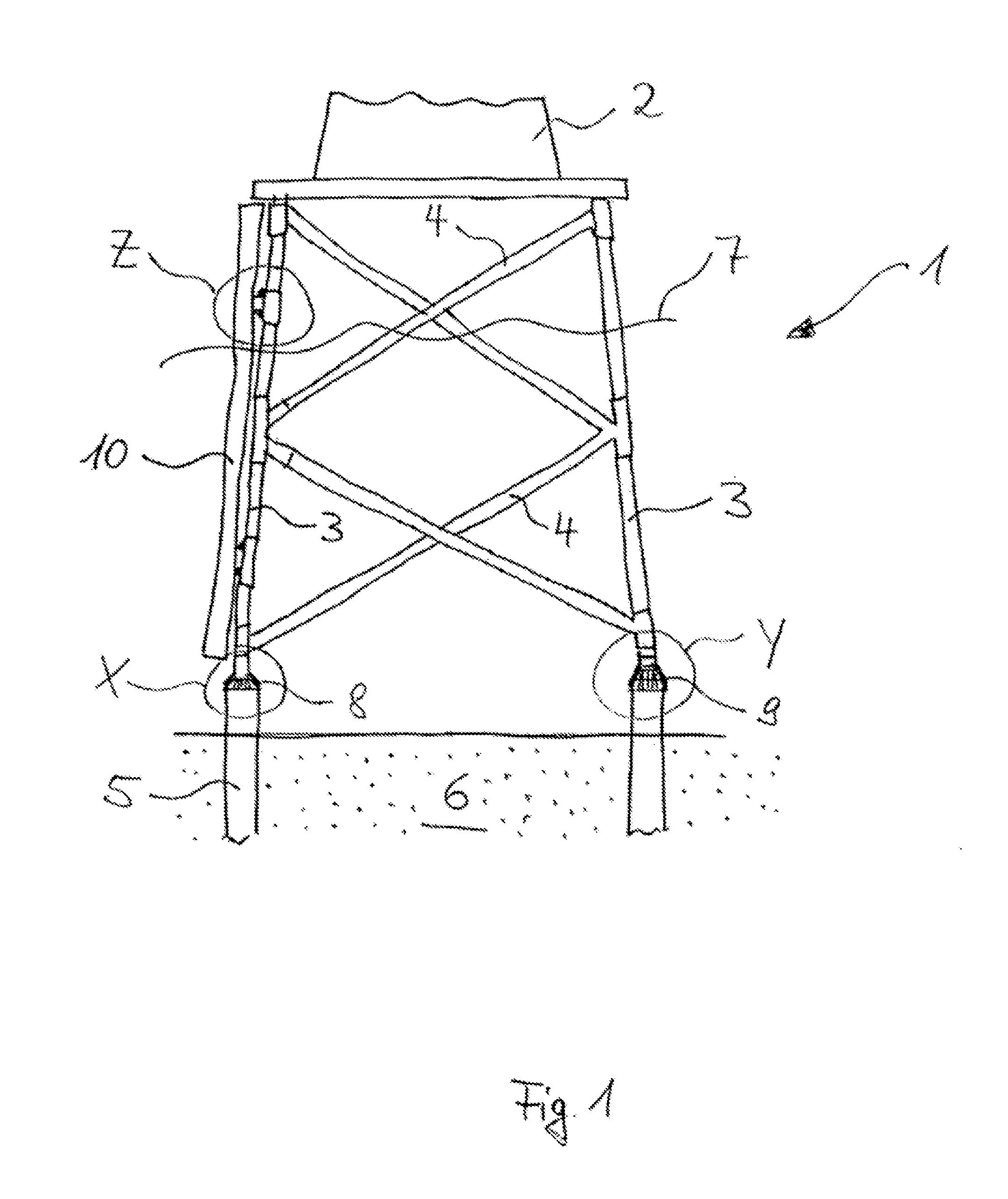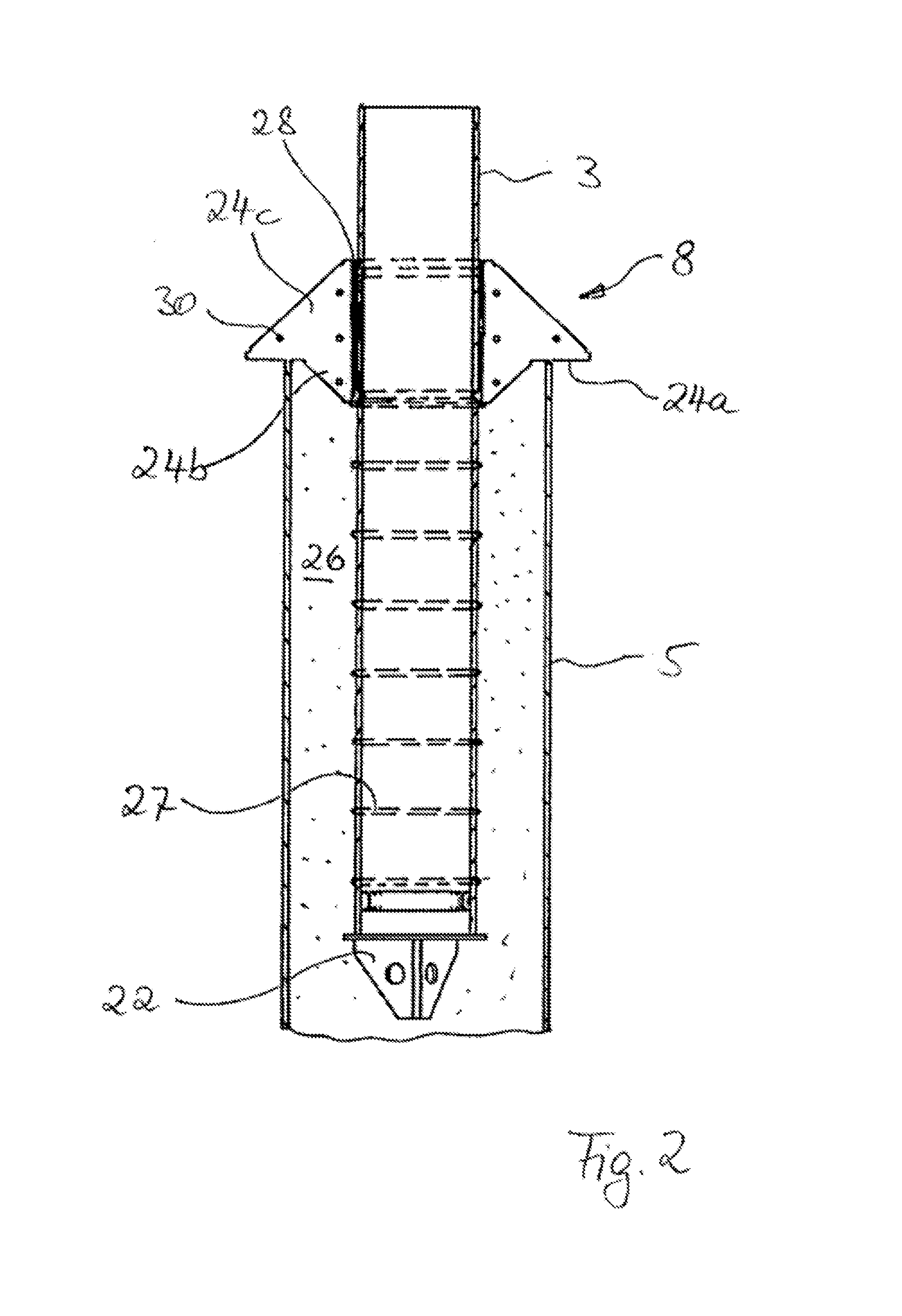Foundation for a wind turbine
a technology of wind turbines and lattice towers, which is applied in the direction of towers, buildings, constructions, etc., can solve the problems of increasing the cost of lattice tower structures and reducing the fatigue strength of structures, and achieves good quality, sufficient grounding, and short time
- Summary
- Abstract
- Description
- Claims
- Application Information
AI Technical Summary
Benefits of technology
Problems solved by technology
Method used
Image
Examples
Embodiment Construction
[0037]FIG. 1 shows a foundation structure 1 for a tower structure 2. This foundation structure 1 is a jacket for an offshore structure such as, for example, for an offshore wind turbine, which means that the jacket is anchored to the sea floor 6, wherein the foundation structure 1 is configured and arranged that its upper part is above sea level 7.
[0038]The jacket consists of corner posts 3 and struts 4 which are arranged between the corner posts 3 and secured thereto. These components are load-dissipating parts, which are referred to as primary structures. The corner posts 3 are anchored via hollow foundation piles 5 in seabed 6, wherein the insertion depth of the corner posts 3 in the foundation piles 5 is limited by pile stoppers 8, 9. As will be shown later in detail, FIG. 1 shows two different pile stoppers, namely pile stopper 8 adhesively secured at the left corner post, pile stopper 9 connected by grout at the right corner post.
[0039]FIG. 2 shows the section designated with ...
PUM
 Login to View More
Login to View More Abstract
Description
Claims
Application Information
 Login to View More
Login to View More - R&D
- Intellectual Property
- Life Sciences
- Materials
- Tech Scout
- Unparalleled Data Quality
- Higher Quality Content
- 60% Fewer Hallucinations
Browse by: Latest US Patents, China's latest patents, Technical Efficacy Thesaurus, Application Domain, Technology Topic, Popular Technical Reports.
© 2025 PatSnap. All rights reserved.Legal|Privacy policy|Modern Slavery Act Transparency Statement|Sitemap|About US| Contact US: help@patsnap.com



